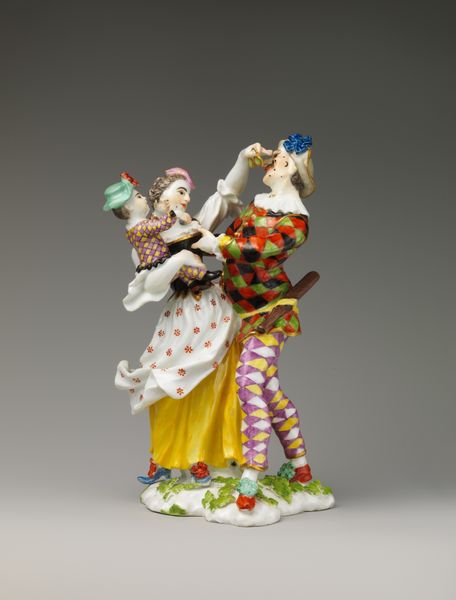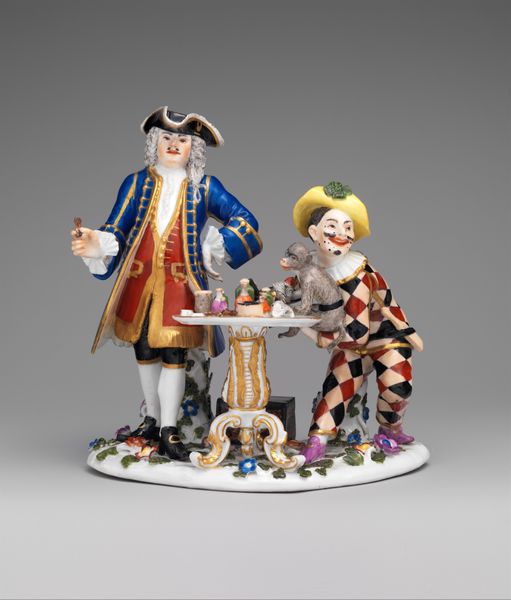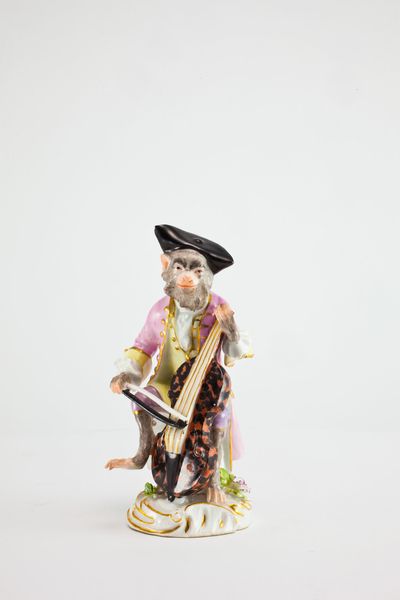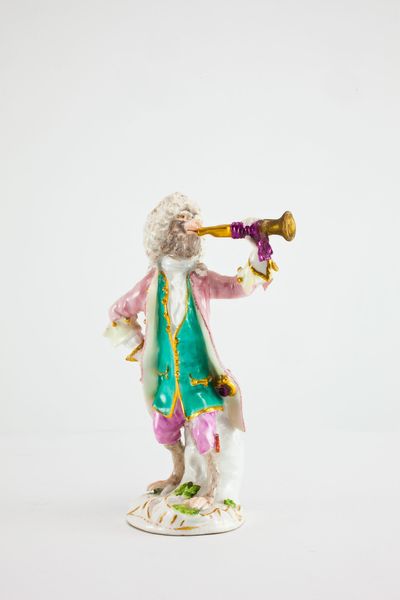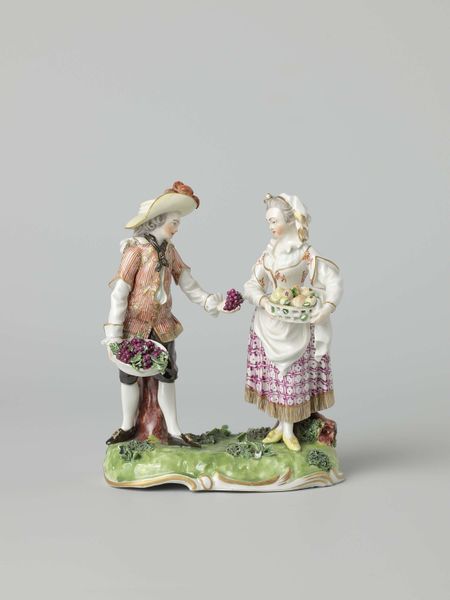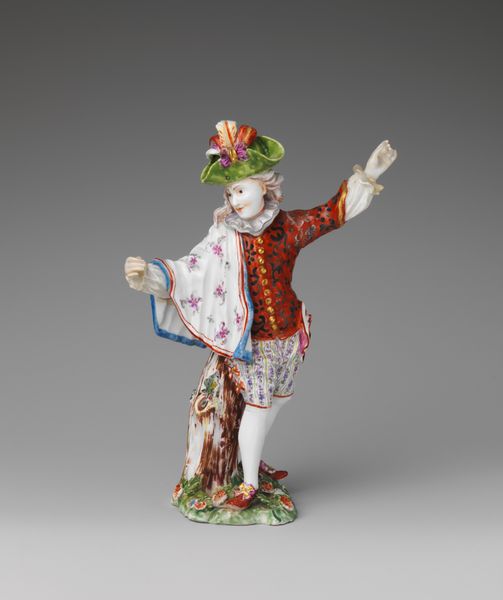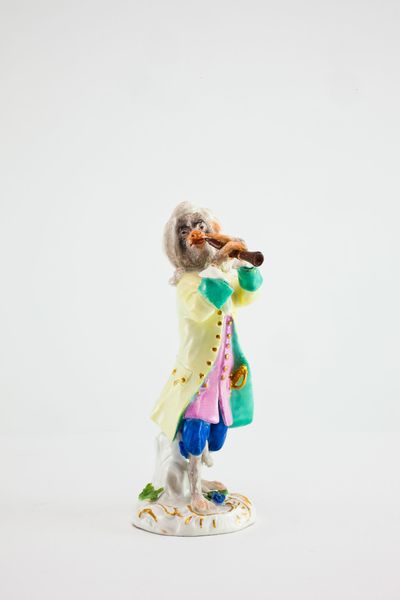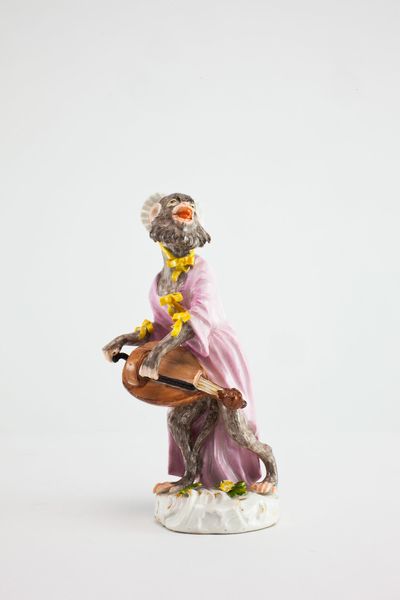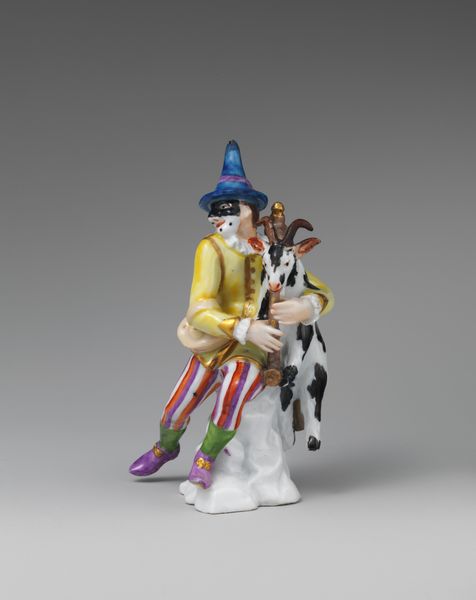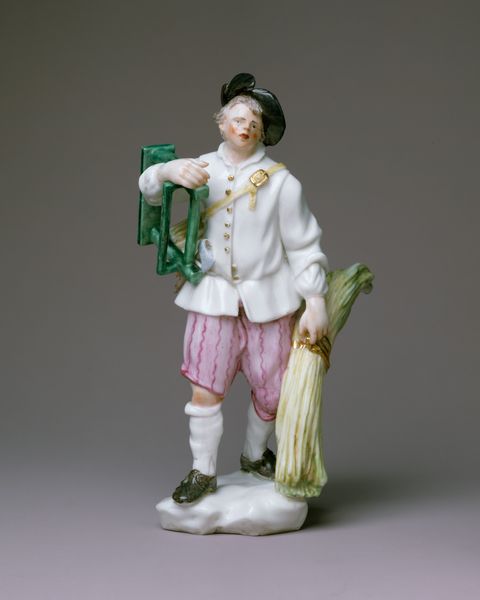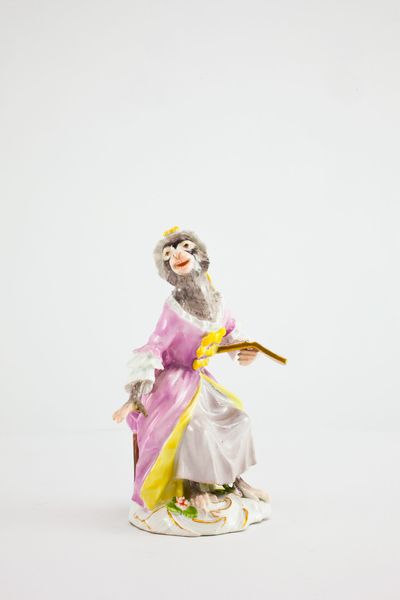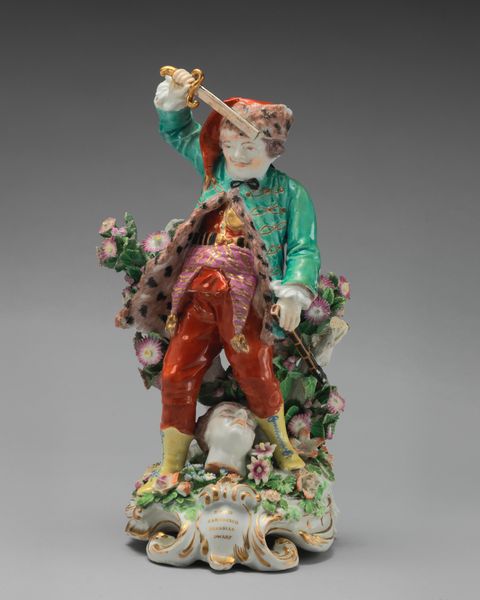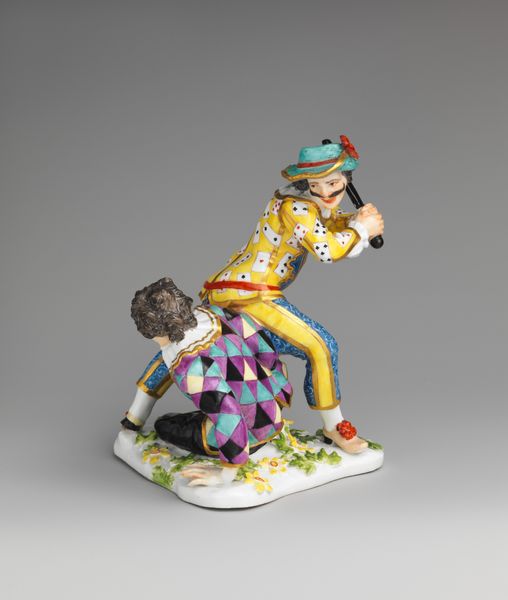
ceramic, porcelain, sculpture
#
ceramic
#
porcelain
#
figuration
#
sculpture
#
decorative-art
#
rococo
Dimensions: H. 4 15/16 in. (12.5 cm)
Copyright: Public Domain
Editor: Here we have “Drum Bearer for the Monkey Band,” made around 1765 by the Meissen Porcelain Manufactory. These little porcelain figures, well, they're whimsical, even absurd! What do you see in this piece? Curator: Beyond the playful Rococo aesthetic, it's vital to consider the societal context. These figurines participate in a long and complex history of representing marginalized groups as figures of entertainment and subversion. We need to ask: what is the nature of that humor, and at whose expense does it function? Editor: I see, it’s not simply playful, but rather potentially loaded. Curator: Precisely. “Singeries,” these depictions of monkeys in human dress and activities, were fashionable. But consider this: are these figurines merely humorous decorations, or do they reflect broader societal anxieties about class, privilege, and the perceived natural order? Are these figures holding up a mirror to the viewers and, if so, what are they reflecting back? Editor: So, you're suggesting it’s a commentary on society… perhaps even poking fun at the aristocracy? Curator: Perhaps. The monkeys are mimicking the fashions and musical tastes of the time. Does that suggest a critique of aristocratic decadence? Or does it further dehumanize already marginalized people by drawing parallels to primates? Remember, Enlightenment ideas were circulating, yet colonial exploitation was also intensifying. These objects exist within that contradiction. Editor: This really complicates my initial view of it as just being “cute.” Now, I see the figures raise more questions than they answer. Curator: Indeed. Analyzing the Drum Bearer compels us to confront uncomfortable histories of power, representation, and the ongoing reverberations of colonialism within our cultural institutions. It reminds us of the responsibility to look beneath the surface and examine the narratives embedded in these seemingly innocent objects. Editor: Thank you. I'll definitely look at other pieces from that period differently now!
Comments
No comments
Be the first to comment and join the conversation on the ultimate creative platform.
